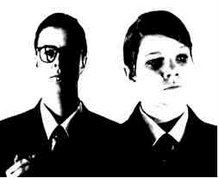
The Loves of Sheperds by Glenn Brown was one of the pieces he submitted to the Turner Prize 2000. He got into trouble for plagiarism when Tony Roberts claimed it was copied from from his illustration for the novel Double Star. The dispute was settled out of court.
Interestingly the book deals with the themes of impersonation and the validity of copies.


1 comment:
I found another story in 'Art Restoration' by Francs Kelly that I thought you might like. It's quite long though.
'VAN MEEGEREN, MASTER FORGER.
In th light of the multitude of articles and books about the extroadinary forging career of Hans Van Meegeren, it seems superflous to repeat the stpry. A brief recounting of the highlights together with a few fresh observations seems necessary.
In 1961 a stage play was produced in London entitled ''Masterpiece'' which told the Van Meegeren story, and Lord Kilbracken's book ''Van Meegeren'' gives a detailed account of his life and forging techniques.
Van Meegeren worked as an artist in his native Holland, creating insignificant paintings which were on occasion used for commercial reproduction. His personal vision was banal and uninspired. Reacting to the scorn of art critics to his work, he set about preparing in the 1930's for his ultimate revenge and vindication as the artist genius he considered himself to be. Van Meegeren studied and experimented with the materials and techniques of Old Masters. He forged and sold the works of many painters besides the well-known Vermeers. Acting as his own agent, he shared neither the secret nor the profit. His undoing came about after World War II when he was brought to trial in 1947 for having sold a 'national treasure', a Vermeer painting, to one of the Nazi chiefs, Hermann Goering. While in prison, he painted another Vermeer to prove to disbelieving authorities that he was not a traitor but the most succesful forger of all time. The total profits of his forgery sales amounted to over 700,000 pounds (1,680,000 dollars) and amount that would be equivalent to nearly treble that figure today.
The war provided a convenient cover for his activities. Had any of his pictures been subjected to laboratory analysis they would have been discovered, for even at that time scientific examination was sufficiently advanced. The war also created a problem for him in that his source of the important pigment lapis lazuli was closed. During his trial the reults of the scientific examination by the expert Dr Paul Coremans confirmed the use of cobalt blue,a colour unknown in Vermeer's time.
Van Meegeren's greatest work, 'Christ at Emmaus', was sold to the Rembrandt Society in 1937. He chose a religious painting as there in only one known work by Vermeer of this subject. Armed with the information that as a youth Vermeer was influenced by the Italian artist Caravaggio, he created a work in the stlye of Vermeer might have emploed at that time. Van Meegeren explained to interrogators that he had painted it over a canvas on which had previously painted the head of a child. Ultimately a radiograph proved his contention. Following the trial, 'Christ at Emmaus' was relegated in disgrace to languish in the vaults of the Rotterdam museum, it's value reduced to nil. One wonders what price it might fetch on the market today if offered for sale. Its value has certainly risen considerably as an historical curiosity if not as a work of art. Perhaps one day we may see artists forging Van Meegeren forgeries.
'The Procuress', a work Van Meegeren copied about the year 1940 after the seventeenth century Dutch painter Dirck van Baburen, now hangs in the Courtauld Institute, London. This is the only forgery by Van Meegeren in England - it is hoped!'
Post a Comment